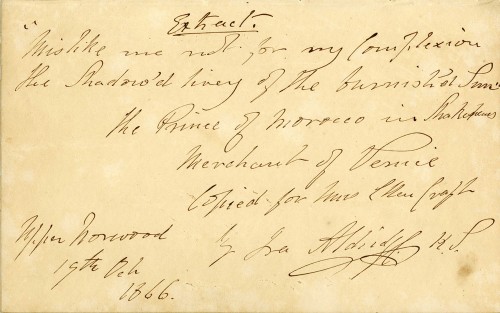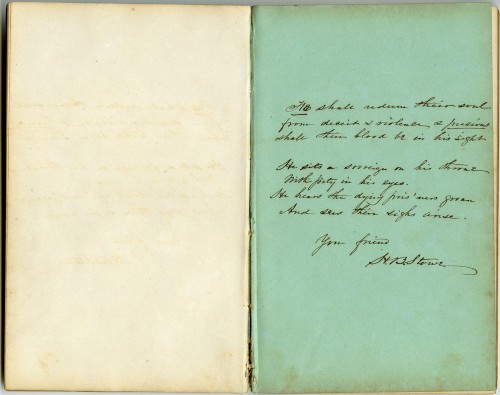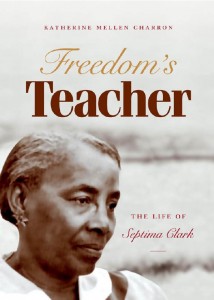In spring 2010, Julia Ellen Craft Davis and Vicki Lorraine Davis generously donated the Craft and Crum Family Papers to the Avery Research Center. Archivists and historians alike are delighted with the major highlight of the collection: a tribute book to William and Ellen Craft, enslaved people from Macon, Georgia who completed a daring escape and became internationally known celebrities.
Opening the slim volume for the first time, Avery staff members gasped at the handwriting of thespian Ira Aldridge, an African American from New York who graced the London stage in the 19th century. Though celebrated in England and the European continent, Aldridge also faced enormous prejudice due to his race. Invoking the sentiments of the Prince of Morocco in Shakespeare’s Merchant of Venice, Aldridge quoted, “Mislike me not for my complexion, / The shadow’d livery of the burnish’d sun.” With these words, Aldridge welcomed American refugees William and Ellen Craft to England and issued a shared plea for equality.
Created upon the Crafts’ entrée into English abolitionist circles, this tribute book contains passages and quotations written by well-known supporters, including the American author Harriet Beecher Stowe as well as Ira Aldridge and his wife, the Swedish countess Amanda Aldridge. A cartes-de-visite album of these figures, the Crafts, and other abolitionists such as Frederick Douglass and William Lloyd Garrison provides a rich visual counterpart to the volume and hints at the international importance of these materials.
But just who were the Crafts and how did they emerge as public figures in the transatlantic abolitionist movement?
Continue Reading →








Recent Comments